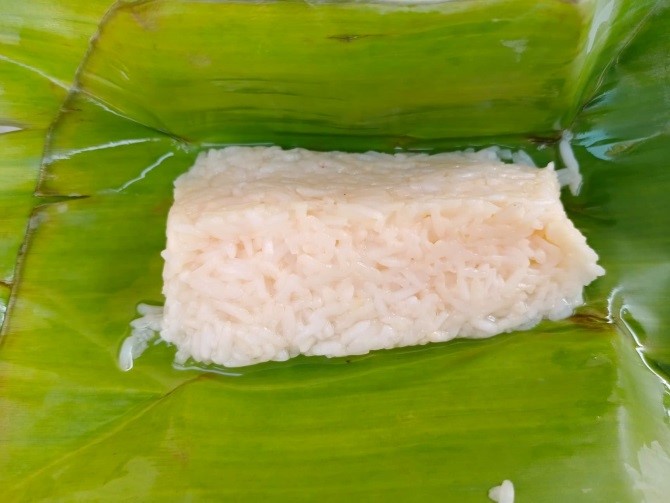ความหลากหลายและความปลอดภัยของอาหารหมักพื้นบ้านจากแบคทีเรียก่อโรคบริเวณชายแดนไทย–กัมพูชา จังหวัดสุรินทร์
Main Article Content
Abstract
Kotchanipha Udomthawee, Nongnut Saraphi, Jutamas Yoomark and Piyarat Meekaew
รับบทความ: 8 ธันวาคม 2562; แก้ไขบทความ: 21 พฤษภาคม 2563; ยอมรับตีพิมพ์: 27 พฤษภาคม 2563
บทคัดย่อ
งานวิจัยนี้มีวัตถุประสงค์เพื่อศึกษาความหลากหลายและความปลอดภัยของอาหารหมักพื้นบ้านจากแบคทีเรียก่อโรคในบริเวณชายแดนไทย–กัมพูชา จังหวัดสุรินทร์ โดยเก็บตัวอย่าง 4 อำเภอ ได้แก่ กาบเชิง สังขะ พนมดงรัก และบัวเชด ครอบคลุมพื้นที่ 9 ตำบล ได้แก่ กาบเชิง ด่าน แนงมุด โคกตะเคียน ตะเคียน ตาตุม บักได ตาเมียง และจรัส พบว่า มีอาหารหมักพื้นบ้าน จำนวน 41 ชนิด สามารถจัดได้เป็น 6 ประเภท ได้แก่ ธัญพืช เนื้อ ปลา ผัก ผลไม้ และอื่น ๆ มีจำนวน 3 8 6 9 11 และ 4 ตามลำดับ พื้นที่ที่พบชนิดอาหารหมักพื้นบ้านมากที่สุด คือ ตำบลด่าน อำเภอกาบเชิง รองลง มาคือ ตำบลตะเคียน และตำบลโคกตะเคียน อำเภอกาบเชิง ตามลำดับ ด้านความปลอดภัยของอาหารหมักพื้นบ้านจากการเก็บตัวอย่าง จำนวน 144 ตัวอย่าง พบการปนเปื้อนของแบคทีเรียก่อโรค จำนวน 14 ตัวอย่าง ในอาหารหมักพื้นบ้าน จำนวน 7 ชนิด ได้แก่ ขนมจีน แหนมหมู ไส้กรอกหมู ปลาจ่อม ผักกาดเขียวดอง กุ้งจ่อม และ ปูดอง โดยปูดองมีการปนเปื้อนแบคทีเรียทุกชนิดที่ศึกษา ได้แก่ Salmonella sp. Staphylococcus aureus Escherichia coli Bacillus cereus และ Clostridium perfringens และรูปแบบอาหารหมักที่มีการปนเปื้อนมากที่สุด คือ อาหารหมักวางจำหน่าย การศึกษานี้อธิบายได้ว่าความหลากหลายของอาหารหมักพื้นบ้านขึ้นอยู่กับบริเวณที่ทำการเก็บตัวอย่างและทรัพยากรที่เป็นวัตถุดิบ และความปลอดภัยจากแบคทีเรียก่อโรคขึ้นอยู่กับชนิดของอาหารและขั้นตอนในการผลิตและการเก็บรักษาอาหารหมักพื้นบ้าน
คำสำคัญ: อาหารหมัก แบคทีเรียก่อโรค ชายแดนไทย–กัมพูชา
Abstract
This research aimed to study the diversity and safety of local fermented foods from pathogenic bacteria nearby Thailand–Cambodia border, Surin province. The samples were collected at 4 districts; Kabchoeng, Sangka, Panomdongrak, and Buached and covered 9 sub–districts; Kabchoeng, Daan, Nagmood, Koktakien, Takien, Tatoom, Bakdai, Tamieng, and Jaras. The results showed that 41 kinds of local fermented foods were found and categorized 6 types using raw materials, cereals, meats, fish, vegetables, fruits and others which 3, 8, 6, 9, 11, and 4 kinds, respectively. The most number and variety of local fermented foods was found at sub–district Daan, following with sub–district Takien and Koktakien, district Kabchoeng, respectively. The 144 samples was collected to determine the safety of local fermented foods from pathogenic bacteria. Fourteen samples was contaminated with pathogenic bacteria in 7 kinds of local fermented foods, fermented rice–flour noodles, fermented pork, fermented pork sausage, fermented fish (Plajom), pickled green cabbage, fermented shrimp, and fermented crab. The fermented crab was contaminated all of pathogenic bacteria: Salmonella sp., Staphylococcus aureus, Escherichia coli, Bacillus cereus and Clostridium perfringens. Therefore, bacterial contamination was found from non–fermented containers. This finding indicated that diversity of local fermented foods belonging to the raw material sources and hygienic in the preparation of raw materials for making and storage of the local fermented foods.
Keywords: Fermented food, Pathogenic bacteria, Thailand–Cambodia border
Downloads
Article Details

This work is licensed under a Creative Commons Attribution-NonCommercial 4.0 International License.
References
AOAC. (1984). Official Methods of Analysis of the Association of Official Analytical Chemistry. 14th ed. Washington, DC: Author.
Bangtrakulnon, A., Marnrim, N., Pulrrikarn, C., Sawanpanyalert, P., and Sawetwiwat, A. (2004). Food pathogens in ready–to–consume local fermented foods (Kungjom, Plajom, Plara, Pudong). Food Journal 34(1): 90–99. (in Thai)
Carmen, A. Rodríguez, O., Calo–Malta, P., Prado, M. and Barros–Velázques, J. (2006). Preliminary characterization of bacteriocin from Lactobacillus lactis, Enterococcus facium and Enterococcus mundtii strains isolated from Turbot (Psetta maxima). Food Research International 39: 356–364.
Gilliland, S. E., and Speck, M. L. (1977). Antagonistic action of Lactobacillus acidophilus toward intestinal and food–borne pathogenic in Associative Cultures. Journal of Food Protection 40: 820–823.
Helander, I. M., Wright, A. V., and Wattial–Sandholm, T. M. (1997). Potential of lactic acid bacteria and novel antimicrobials against gram–negative bacteria. Trends in Food Science and Technology 8: 146–150.
Hwanhlem, N., Buradaleng, S., Wattanachant, S., and Benjakul, S. (2011). Isolation and screening of lactic acid bacteria from Thai traditional fermented fish (plasom) and production of plasom from selected strains. Food Control 22: 401–407.
Inoue, Y., Takano, M., and Shibasaki, I. (1980). Antagonistic action of lactic acid bacteria from toward food–deteriorating bacteria. Microbial Utilization of Renewable Re-sources 1: 108–115.
Jaroenjiratrakul, W., and Rodpradit, U. (1997). Isolation, selection and comparison of lactic acid bacteria from Thai fermented foods. Songklanakarin Journal of Science and Technology 19(2): 181–188.
Jin, Y., Rossow, W. B., and Wylie, D. P. (1996). Comparison of the climatologies of high level clouds from HIRS and ISCCP. Jour-nal of Climate 9: 2850–2854.
Kaewintha, P. (2010). Detection of Microbial Contamination in Fermented Fish Commercial Products in Phuan District, Chiang Rai Province. Master of Science Thesis. Chiang Rai: Chiang Rai Rajabhat University. (in Thai)
Maneerat, S. (2000). Exopolysaccharide from lactic acid bacteria. Songklanakarin Journal of Science and Technology 22: 397– 402.
Miyashita, M. Yukphan, P., Chaipitakchonlatarm, W., Malimas, T., Sugimoto, M., Yoshino, M. Potacharaen, W., Tanasupawat, S., Nakagawa, Y., Kiritkara, K., Tanticharaen, M., and Suzuki, K.I. (2012). 16s rDna gene sequence analysis of lactic acid bac-teria isolated from fermented foods in Thailand. Microbiology and Culture Collection 28(1): 1–9.
Oupathum, O., Chantarapanont, W. Suwonsichon, T., Haruthaithanasan, V., and Chompreede, P. (2009). Screening lactic acid bacteria for improving the kanom–jeen process. Kasetsart Journal (Natural Science) 43: 557–565.
Swetwiwathana, A., Pilasombut, K., and Selthakul, J. (2009). An in vitro screening of isolated bacteriocin–producing lactic acid bacteria from Thai fermented meat for probiotic prospect. The 3rd International Conference on Fermentation Technology for Value added Agriculture Products. Khon Kean, Thailand.
Udomthawee, K., Chankaew, K., Phanurat, A., and Nakochom, K. (2012). Protein, calcium and phosphorus composition of fermented fish in the lower Mekong Basin. Chiang Mai Journal of Science 39(2): 327–335.
Udomthawee, K., Vetayasuporn, S., Saraphi, N., Klangprapan, J., and Khotsri. (2017). Diversity and Wisdom of Local Fermented Food Products in the Southern Part of North–East of Thailand. Report presented to National Research Council of Thailand. Surin: Faculty of Science and Technology, Surindra Rajabhat University. (in Thai)
